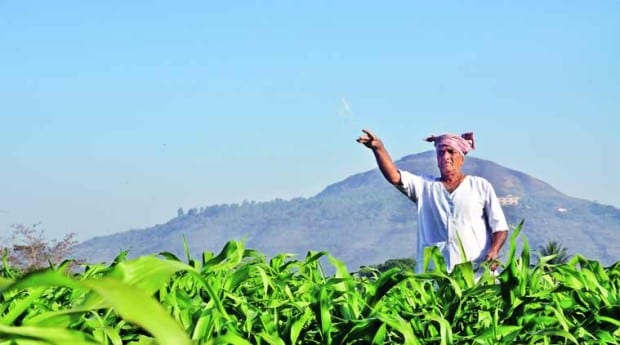Besides creating a robust data capture platform, DBT would require retailers to have wireless devices with bank connectivity and facility for farmers to swipe smart cards for claiming subsidy.
Harish Damodaran
Direct Benefit Transfer (DBT) of fertiliser subsidy to farmers is an eminently feasible proposition and the Narendra Modi government should lose no time in going ahead with its implementation, says US Awasthi of the Indian Farmers Fertiliser Cooperative (Iffco).
“People interested in stalling DBT are giving all sorts of excuses. They say it won’t work because a significant part of cultivation is today done by tenant farmers or sharecroppers not owning the land and without any formal lease agreements. But these concerns can easily be addressed,” claims the managing director of the country’s largest fertiliser producer and marketer.
Iffco, in 2014-15, sold 11.13 million tonnes (mt) of fertilisers — one in every five bags bought by farmers in India — including 7.19 mt of urea, 1.89 mt of di-ammonium phosphate (DAP) and 2.02 mt of complex fertilisers. The first requirement for DBT is a system to track the movement of every bag of fertiliser, right from the manufacturing plant or port of import till the last-mile point of sale to the farmer.
The government, Awasthi points out, already has a Fertiliser Monitoring System (FMS). This web-based software application, operational since 2007, captures the dispatches of material to over 600 districts via 750-odd railway rake points. From 2012, the system’s coverage has been extended to nearly 1.6 lakh fertiliser retailers in the country. In 2014-15 alone, 38 lakh-odd invoices involving sale of 54 mt of fertilisers up to the retail point were posted on the now mobile-enabled FMS. And all this information is available on a daily, real-time basis.
“The next step is to capture transactions from the retail level to the farmer. For this, we need to build a farmers’ database and enter it in a centralised system, which could then be used to develop a platform for tracking sales from the retailer end. This middleware platform can be further integrated with banking software, to enable transfer of subsidy to a farmer’s account whenever a transaction happens and is captured in the system,” notes Awasthi.
Besides creating a robust data capture platform, DBT would require retailers to have wireless devices with bank connectivity and facility for farmers to swipe smart cards for claiming subsidy.
The swipe cards could be issued to anybody wanting to buy fertiliser. “You can have Aadhaar, Rupay or Kisan Credit Card for basic farmer identification, but there is no necessity for the person to be owner of the land being tilled. Also, there will be only one card for every person, with an annual subsidy limit of Rs 5,000 per card,” suggests Awasthi.
The Rs 5,000 cap and only one card per person conditions would, more or less, ensure that only genuine farmers — tenants and sharecroppers included — get the subsidy, which is automatically transferred to their bank accounts whenever they purchase fertilisers and swipe the card through the wireless device/computer attachment with the retailer.
At current maximum retail prices (MRP), the Rs 5,000 subsidy entitlement per card would meet more than 100 per cent of the fertiliser costs for a one-acre farmer in Punjab or Haryana growing a crop of paddy and wheat every year (see table). With larger farms or in the event of MRPs going up, the percentage of costs covered would get progressively lower.
“The Rs 5,000 cap has been arrived at by simply taking the government’s total annual subsidy bill at Rs 55,000 crore and dividing it among the country’s 11 crore farmers. The government can always raise these if it so desires. Besides, the smaller farmers may be permitted to transfer their unutilised subsidy entitlement to the bigger farmers,” states Awasthi. The main issue in DBT is over the practicability of making direct payments to crores of farmers, as opposed to the current system where the government pays subsidy to just 100 or so manufacturers and importers of fertilisers.
“It isn’t difficult to track every purchase made by a farmer. In the last one year, we have captured all retail-end sales taking place in two districts — roughly 33,000 transactions in Ranchi (Jharkhand) and 5,700-plus in Bilaspur (Himachal Pradesh) — and uploaded this whole data in the FMS. I am prepared to extend the experiment to 50 districts and even install swiping machines at each of Iffco’s 36,000 societies”, contends Awasthi.
DBT, according to him, is workable provided there is political will. “If almost 16 crore bank accounts can be opened under Pradhan Mantri Jan-Dhan Yojana, which is twice the target of 7.5 crore that was set for January 26, why should implementing DBT for 11 crore farmers be so difficult? The direction for it must also perhaps come from the top,” adds Awasthi.
(The article was published on June 11, 2015 but published again after the FM announced the proposal to introduce DBT for delivering fertiliser subsidy)



